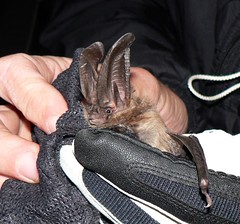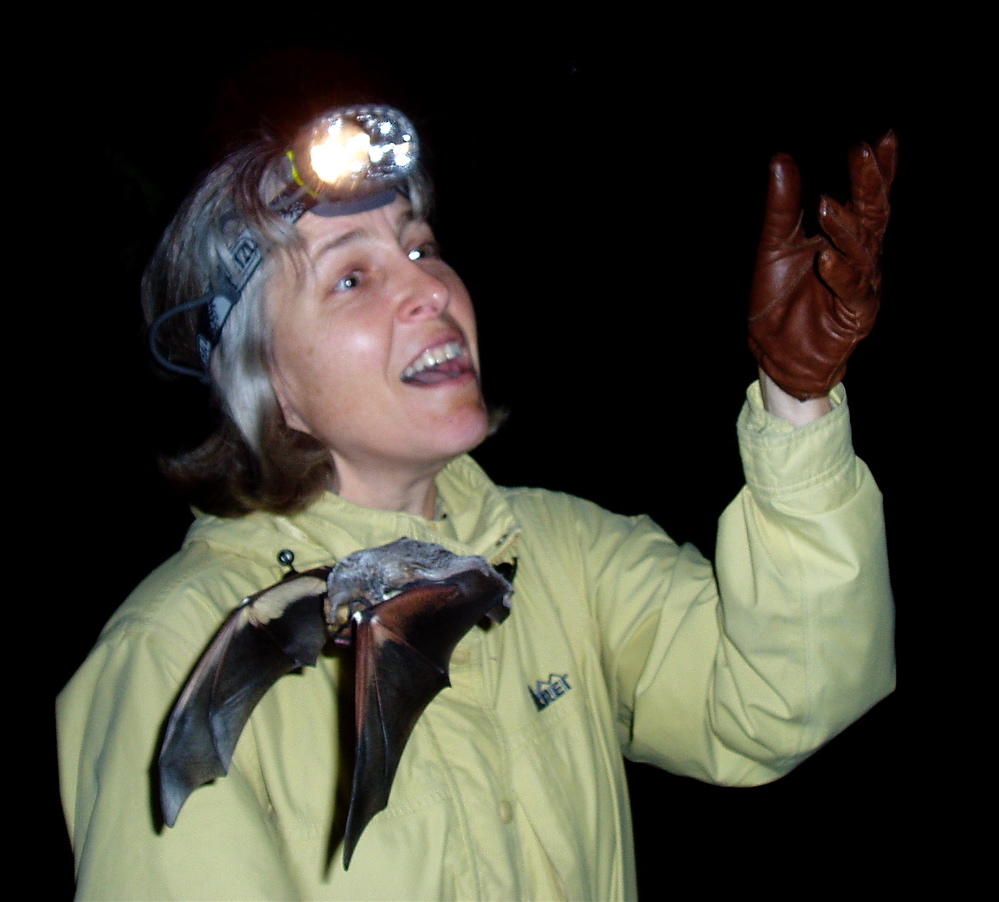Bags o' bats
More live action reporting from the BCI acoustic class!
Today is the first full day of class. Last night we were out recording bats until 2am, so please excuse me if I'm not terribly coherent. Right now I'm taking a break from processing bat calls and waiting for dinner so I get a chance to post another update.
Here's basically how this week-long class works. Breakfast is at 8:30am, which sounds great until you do the math on not getting to bed until 2:30am. Lectures start at 9am, when we gather in the great room here at the Winema Lodge next to Tule Lake and learn about different aspects of acoustic monitoring of bats. Today we went over the various species found in the Pacific Northwest and the call characteristics used to tell the different between species. For some of them it seems pretty impossible to tell them apart even when the experts are describing it. After lunch it's more of the same until dinner. Evenings are spent out in the field with the bats.
There are three types of attendees. In addition to us students, there are a half-dozen instructors including the creators of the tools we are using in the field. There are also a team of "wranglers", experienced bat workers in the region who are here to catch the bats that we will practice our recording skills on. The wranglers head out just after dinner to set up nets at various locations and catch bats. They identify the bats and put them in small cloth bags which they store inside their jackets to keep warm. Periodically they transport them to a wide open space where the students and instructors are waiting. Then we release them in various ways and capture their calls with our recording equipment. We use those recordings to build up libraries of calls of known bat species. Those reference libraries are necessary to identify calls of unknown bats.
Last night there were nets in different locations, and at least one of them was wildly successful. I think we had almost 100 bats to release! Sometimes there were so many that they put a half-dozen or so of a single type into one bag. At first we went slowly, spending time looking at and photographing the bats before releasing them. At the end there were so many bats we just let them go all at once. On the detectors it was like the finale in a fireworks show.
The bat pictured here is an adorable Townsend's big-eared bat (Corynorhinus townsendii). Could those ears possibly be any bigger?



0 Comments:
Post a Comment
<< Home